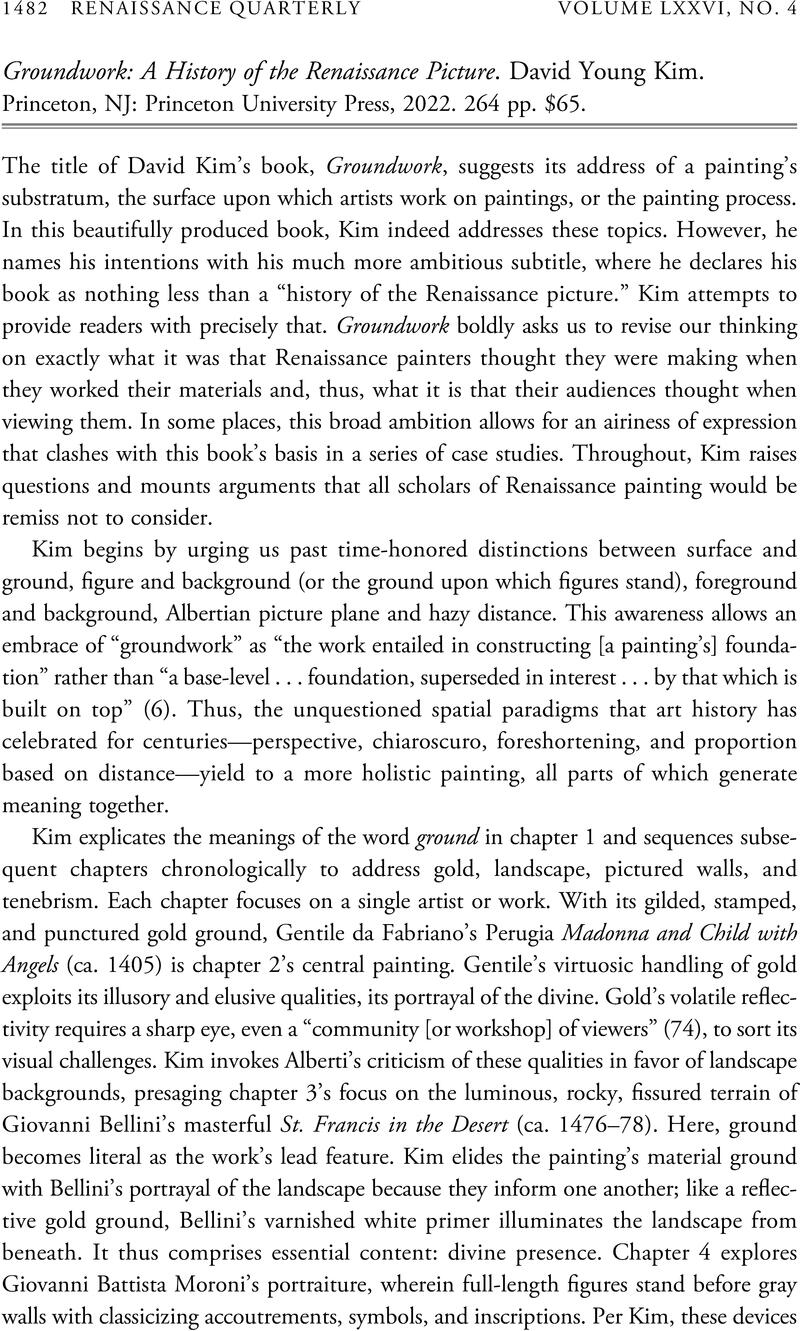No CrossRef data available.
Article contents
Groundwork: A History of the Renaissance Picture. David Young Kim. Princeton, NJ: Princeton University Press, 2022. 264 pp. $65.
Review products
Groundwork: A History of the Renaissance Picture. David Young Kim. Princeton, NJ: Princeton University Press, 2022. 264 pp. $65.
Published online by Cambridge University Press: 24 January 2024
Abstract
An abstract is not available for this content so a preview has been provided. Please use the Get access link above for information on how to access this content.

Information
- Type
- Review
- Information
- Copyright
- Copyright © The Author(s), 2024. Published by Cambridge University Press on behalf of the Renaissance Society of America


